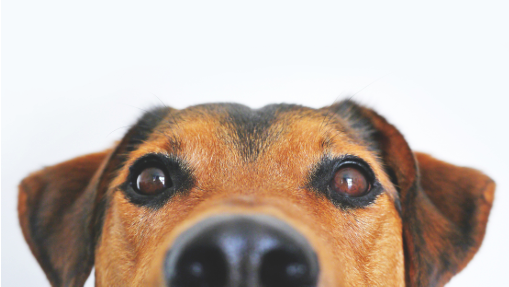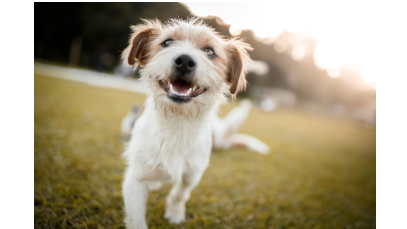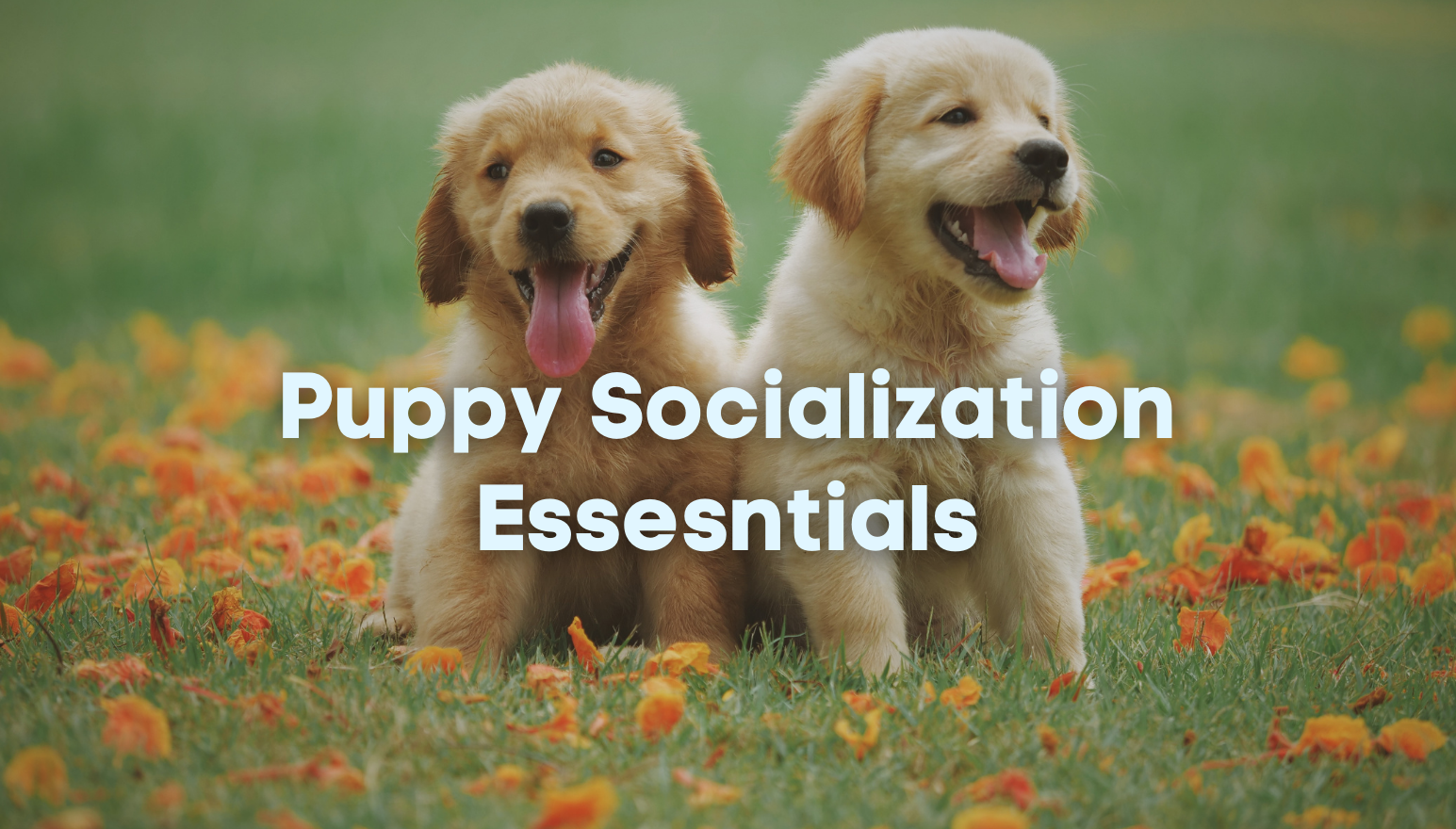The Art & Science of Heeling
By Angelica Steinker, M.Ed., C.D.B.C, CAP2
Designed by Kimberly “Kim” Archer, CPDT-KA, CTDI
“Heeling is a dance of special connection with my dog. Some view it as merely a mechanical exercise, but for me it is the ultimate connection of our two spirits.”
– Ruth E Barish, avid obedience competitor and author
In the world of dogs there are essentially three forms of a dog walking on leash. The most common is the meat and potato –loose leash walking. Politely walking on lead enables dog owners to go for enjoyable daily walks without being pulled. The second, formal heeling, is what competitive obedience training requires. Finally, the dog show world desires gaiting, which is a behavior more similar to loose leash walking than it is to formal heeling.
Decades ago, teaching your dog any of these three forms of leash behaviors meant that the dog was going to be jerked around by the collar. The collar was almost always a choke chain or even a prong collar. Today it is understood that yanking on a dog’s leash for training purposes is less than ideal and also potentially harmful. Medical problems such as burst blood vessels in the eyes, increased eye pressure, possible thyroid gland or salivary gland damage or collapsed tracheas may be caused by leash jerking. This old way of training was not fun for the dog or the owner. Enter clicker training, a new fun way to train that is enjoyable to both the dog and owner.
To teach your dog to heel with a clicker is fun. Note that heel position aligns your left leg with the right shoulder of the dog. If your dog is ahead of this position, it is considered forging and is points off your score. If your dog is behind this position the judge will take off points for lagging.
Equipment
- Your dog.
- A clicker.
- A large dog food bowl or water dish.
- A lightweight leash that is thin and 3 to 5 feet in length depending on your dog’s size (small dogs will need a longer leash and large dogs a shorter leash).
- Food treats that are highly rewarding to your dog. Choose a variety of healthy treats as your dog will be consuming a lot of tiny pieces during her training sessions. Good healthy treats are low fat turkey hotdogs, mozzarella cheese sticks, or a premium brand dog food sold in rolls that can be cut into tiny pieces.
- Comfortable shoes for you to practice your heeling patterns both with and without a dog.
“Your dog will be setting the pace of training”
To begin your journey of heeling with your dog, follow the simple steps below. Ideally train for 3-5 minute sessions many times a day. Your dog will be setting the pace of the training. Only move on to the next step if you have consistent success of 90% or better. If the dog seems confused, back up one or two steps to refresh the dog’s memory.
End your training sessions while your dog is wanting to do more so that her attitude will be wonderful at the next session. Have and create an attitude that heeling is the best part of the day for both you and your dog. Every session should create a smile on both your faces.
Practice heeling without your dog. Create footstep patterns that are always the same and walk with the same rhythm. Decide on the ideal rhythm by having an experienced obedience person watch your dog and tell you the “beat” that fits best with your dog’s gait. In competition obedience, the judge will determine a heeling pattern the day of the competition. Even though there are no set rules as to the order of the pattern, all the movements that will be required of you are clearly described in each hosting organization’s rule book. Future competitors can contact the American Kennel Club (www.AKC.org) or the United Kennel Club (www.ukcdogs.com) or United States Dog Agility Association (www.USDAA.com) all of which host obedience or rally obedience trials, to obtain information on what behaviors are required at each level of competition obedience. A typical heeling pattern will include 90-degree left and right turns, an about turn (kind of like a U turn with a car), a change of pace from normal speed to fast speed or from normal to slow, and back to normal again. Normal pace is usually a brisk walk for the handler. Slow pace is a slow walk for the handler. The fast pace requires the handler to run. Heeling patterns will also include a halt, meaning you stop and the dog sits in heel position.
Clicker training is a physical skill; while training your dog to heel you will need to hold the food treats or toy in your left hand and the clicker in your right hand. The leash will also be in your right hand. The leash needs to be loose and forming a J-shape from the dog’s collar to your right hand (see photo above with black and white sheltie for J-shape). Holding the rewards in your left hand is ideal as rewarding the dog from your right hand would cause your shoulders to twist and pull the dog out of proper heel position by encouraging the dog to curl in front of you. What happens after the click matters as much as what you clicked, so set your dog and yourself up for success. Learn to hold several food treats in the palm of your left hand while holding one treat in between your thumb and forefinger. This will be important when your dog is heeling beautifully; this is the moment to click and reward immediately. There is no time to go treat fishing. You always have to have one treat loaded and ready to deliver in case you need to click something lovely!
” Shape your dog to put her two front feet on the upside-down bowl.”
Grab that bowl and shape your dog to put her two front feet on the upside-down bowl. It can also be a small stool if the dog is large as pictured on the left. This perch will function as a target for your dog’s front feet allowing her to rotate her hind end around her front end. Put this behavior on cue in both directions. Common cues are swing and close. You will be teaching your dog to heel on both sides of your body plus upper-level competition obedience and rally require body awareness to the point that both directions are necessary in foundation training.
Once your dog reliably swings and closes in both directions on cue you can fade the bowl by replacing it with objects that are smaller and smaller in height until ultimately you replace it with just a coffee can lid or something similar that is flat.
Concurrently you have trained your dog to swing and close to the point where she is no longer facing you but instead, she is fully rotating into heel position. Now you are ready to start doodling.
Doodling means you start playing the game of heeling doing very tiny motions that prompt your dog to realign herself to find heel position and get a click and a treat. As your dog’s skill improves your steps can grow from inches to actual steps.
Another important game is to teach your dog to catch food while he or she is in heel position. You don’t want your dog to be looking for food on the floor you want her to be looking up at you. A great way to create this is to drop food from your hand directly into your dog’s mouth. While this may sound like a project to train it only takes a few sessions and is well worth the investment in time as the result will be much prettier.
Now finally you are ready to ask for your first step of heel. Ask your dog to sit and step into heel position next to your dog. Heel position is when your left leg and your dog’s right shoulder are in alignment. For additional help make a dog sandwich by using a wall or ring gating as a guide for your dog so that her options are limited, and it is easiest for her to stay in ideal heel position. You can fade the wall or ring gating by eventually heeling past the barrier in a straight line.
A fun cue to use for eye contact prior to heeling is “ready?” You can say “ready?” in a playful way and then click and reward your dog for eye contact.
Proofing your heeling is important if you plan to compete. Proofing means mildly distracting your dog while she is heeling. You can have a friend begin creating distractions, such as walking past you. Or you can create an alley of food or toys that you can heel next to and eventually cross. The idea is to build on success. If you fail, you are making it too hard for the dog. Decrease the distraction by 50% and try again.
When you reach ten steps of heeling, you can begin moving in large ovals. Competition obedience will require turns in both directions, but to start with ovals is easiest. You are building on success. If your dog tends to be kind of a slow poke or lag, spend additional time working straight lines until the dog has better heel position and add speeding up and slowing down so she really understands heel position and how she may need to speed up or slow down depending on what you are doing. Click and reward only for proper position. Once you no longer have lagging start to work on the oval to the left. The oval to the right will be harder for the lagging dog as putting the dog on the outside circle will exaggerate the lagging. This is not what you want. Always build on success. Skipping steps will only harm the end training result.
At each training session play some proofing games!
Can your dog take five steps of heel while your friend rolls a ball 10 feet away? No? How about 30 feet away? Find your dog’s success point, click and reward, and then slowly increase the difficulty of the proofs.
Teaching your dog to heel with attention is a process, but your reward will be a powerful feeling of unity. Heeling with attention can also be a great tool for managing dog aggression and other behavior problems. Aggressive dogs usually have a strong concern regarding other dogs or people near them. Teaching such a dog heeling with attention keeps the dog’s mind busy and can allow an owner to more safely pass by a triggering stimulus. In general, heeling with attention teaches the dog to focus on the owner which is always helpful in any kind of behavior modification program.
For more information on clicker training competition obedience, check out Silvia Trkman’s DVD Heeling is just another trick.
Happy Heeling from the staff of Courteous Canine, Inc.!















